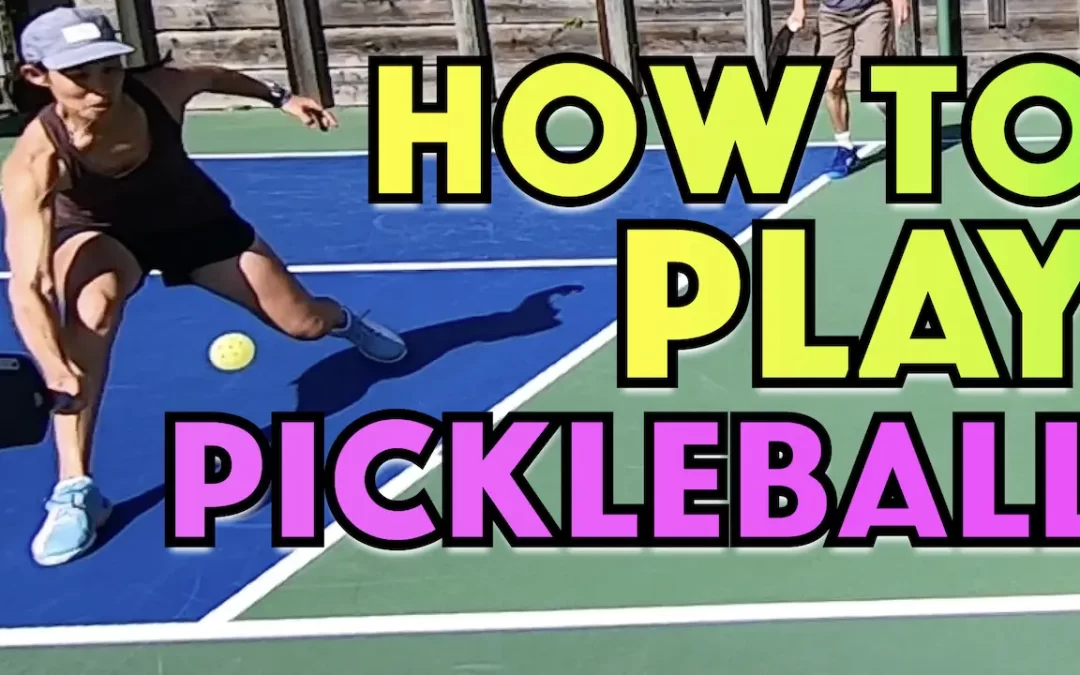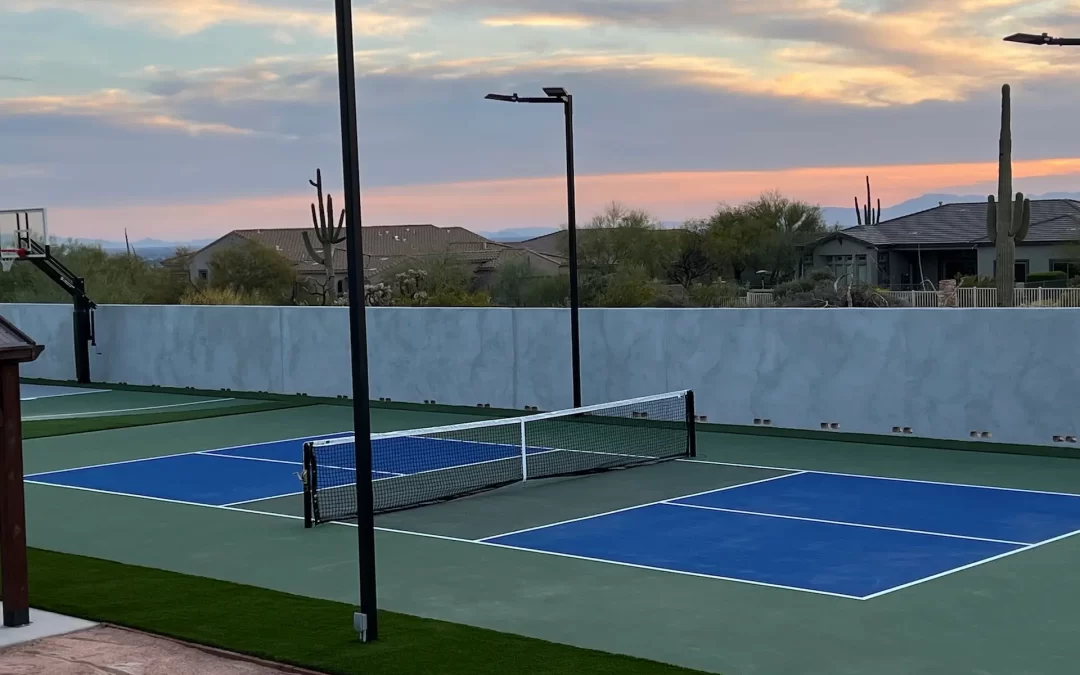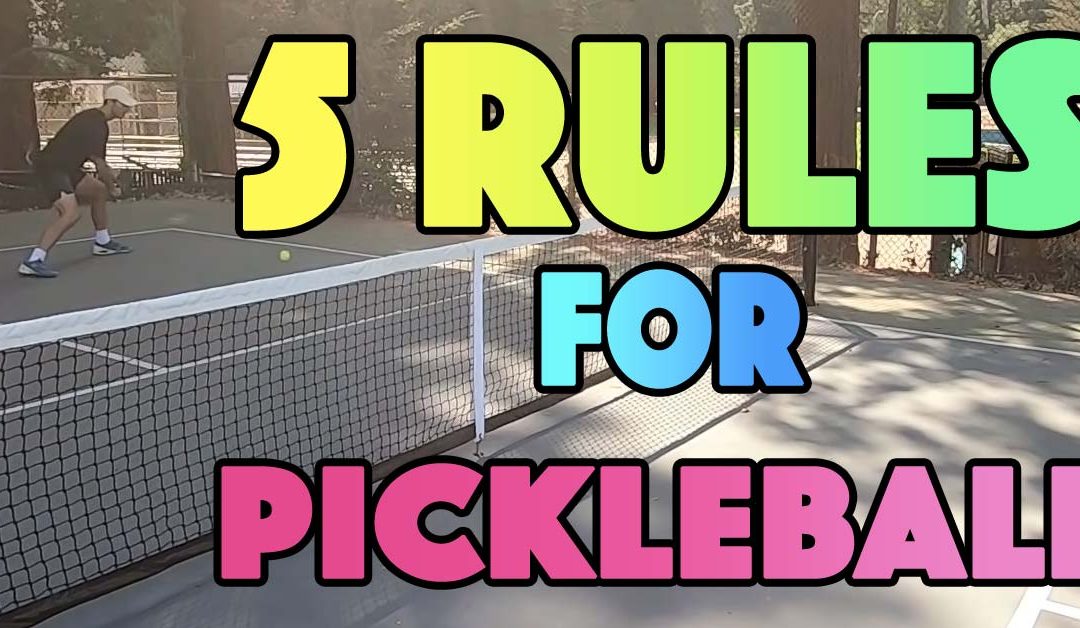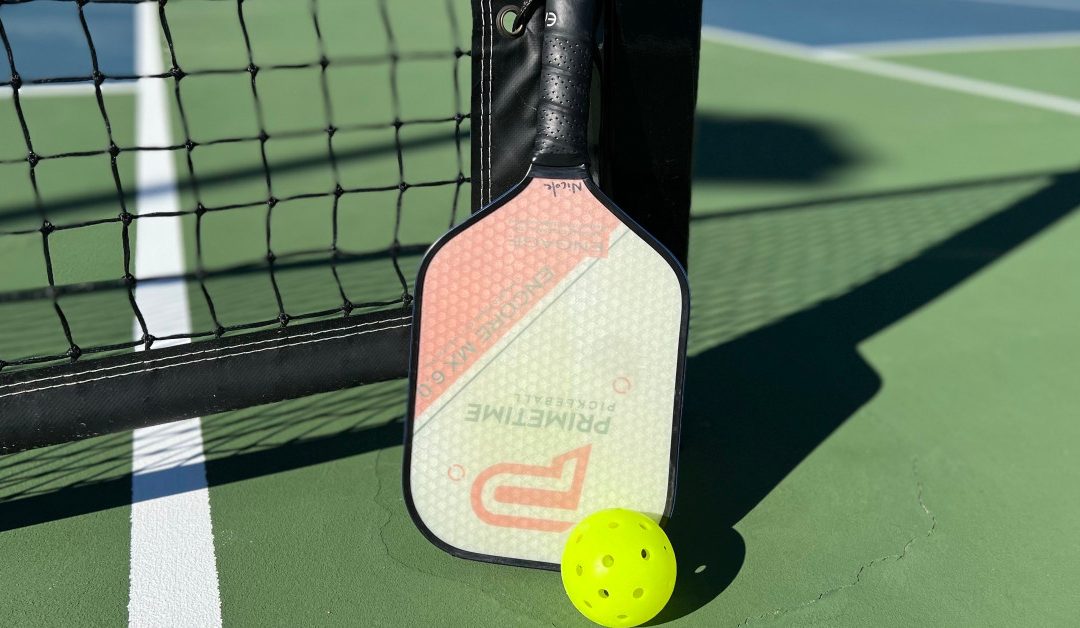Conventional wisdom in pickleball teaches that you want to hit that serve deep, hit the return deep, the serving team drops the next shot, the returning team has come in, and now you advance and both teams are up at the non-volley zone line get into a dink exchange trying to set up their attack.
Eventually one team attacks and then the point concludes usually shortly after that, either with a good defensive play or the attack was just too overwhelming for the defending team to overcome.
Generally, that’s still a very good baseline strategy to be attempting to execute on all your points. It’s a good strategy for the serving team and for the returning team. It really just comes down to who executes it best.
But, as the game unfolds, and also as the evolution of the sport unfolds, other things can happen.
That is the general plan you want to go in with and execute but certainly there are times when what I just described is going to be different than what is best.
One of those things is that you may not want to drop on the third shot as you’re often taught. There are certain scenarios where it is actually the wrong thing to do. You do not want to hit a third shop drop in these particular situations. Or, if it’s deeper in a point you don’t want to drop when you find yourself in this type of situation.
I’m going to cover three of those times when you do not want to drop because it’s going to put your team at a disadvantage if you do it at that time.
You’re going to want to have an alternate plan of action when these situations arise, and they certainly do arise with increasing frequency as the game evolves and as you move up in levels.
Scenario #1 – Opponents Are In A Staggered Formation
Scenario number one when you do not want to hit a drop on that third shot is when you have the returning team in a staggered formation.
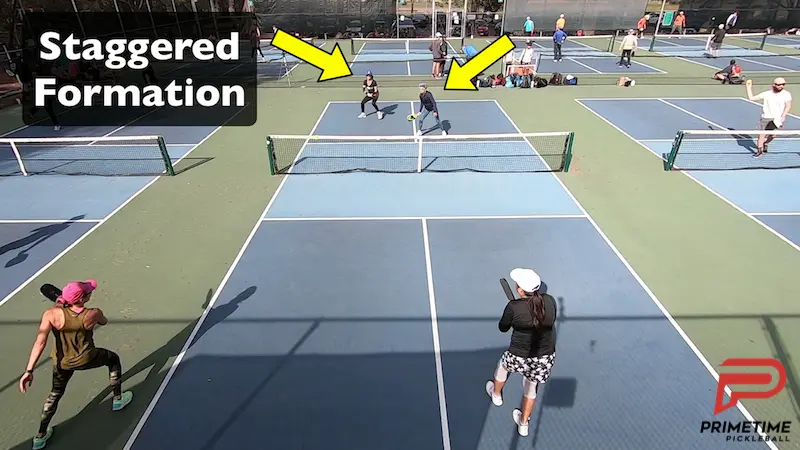
What that means is that one player is back towards the baseline, at the baseline or somewhere in the mid court and the other is up at the non-volley zone line.
That will often happen when you’ve hit a really good deep serve that gets them hitting their return from deeper in the court and they are still attempting to advance after that deep return. But, because they got pinned so far back while they were doing it, they’re really not able to close the gap all the way to getting up to the non-volley zone line and by the time someone on your team is hitting it they’re somewhere in the transition zone.
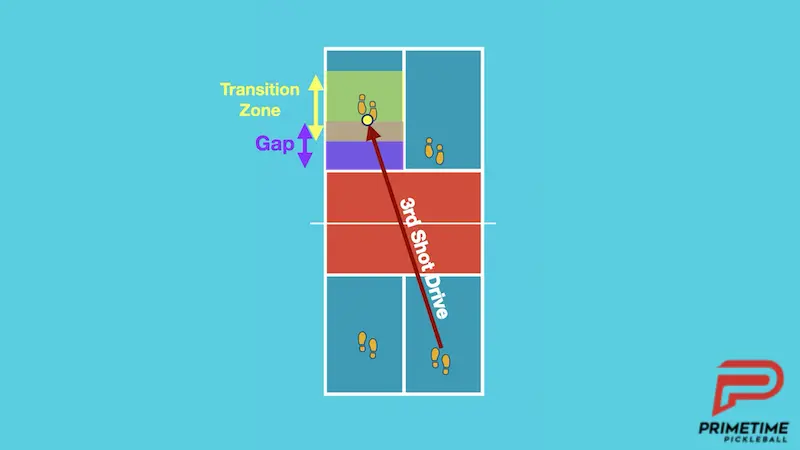
So, that’ll put them in that staggered formation that I mentioned earlier.
When you do see that happening, you’re going to want to drive that deep at that person’s feet (the person back in the court), no matter if that return comes back to the server or the server’s partner.
You want to be driving that deep at their feet wherever they are (somewhat back in the court) because that’s going to lend itself really well to possibly them missing it outright or they’ll send one shorter and then you can drive again.
Or, if they do defend it quite well and can continue in advance then you’ll probably have an easier fifth shot drop to come in behind and then you can mount your attack from that point.
But, that puts you into the advantage for at least that one shot where you have them in a defensive scenario and you’re looking to pounce and they’re hitting a ball from low at their feet.
That’s always a good thing to do – try to get them hitting balls from low at their feet, preferably deeper in the court.
For that moment in time you’ve created a scenario where things could go favorably for you and quickly cascade to you winning the point.
One caveat is that as you get higher in levels and the skills of all players on the court improve, their partner could be anticipating that that’s what you’re going to do because it’s a good play as long as they don’t cross over to cut it off, meaning poach.
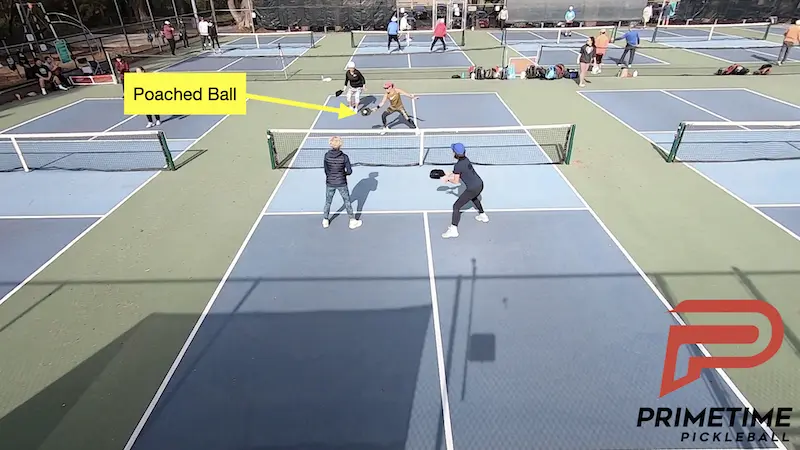
When you are targeting the feet of that deeper player, it does cross the net and crosses the non-volley zone at a higher contact point if someone were to be up at that non-volley zone line. So, if the returner’s partner cuts across and poaches they’re going to have a very advantageous position.
But, at lower levels the returner’s partner is usually not that active so this core strategy of targeting the feet of that player that’s back in the court will often work.
However, keep in mind the caveat that if you do see an active poacher coming across and making you pay for that because they’ve anticipated it then you’re going to do something different and will no longer be wise to hit that shot.
I made a video specifically in that scenario when you’re facing an active poacher. I’m going to link to it here (https://www.youtube.com/watch?v=lNQwLW7bdLU&t). So, if you do see that happening that’s what you’re going to want to do-follow the instructions in that video.
However, as I mentioned, a good core strategy, if there’s not an active poacher is to hit it deeper and at the feet of that incoming player that is not yet up at the non-volley zone line.
Scenario #2 – You Are Pressed (Jammed/Stretched) Or Pushed Back
Scenario number two where you may not want to hit a third shot drop is when you are pressed or jammed or stressed in some way. Or, if you get pushed back in the court and are hitting your third shot from deep (let’s say you had to take a step back from the baseline in order to deal with it).
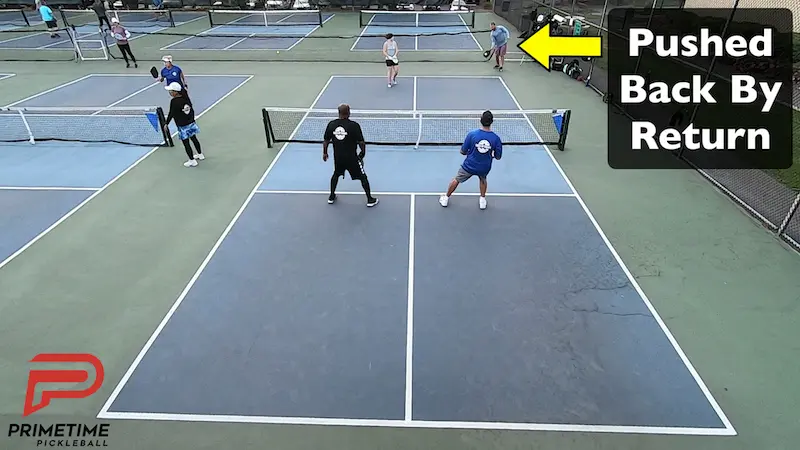
This typically arises when they’ve hit a really good return which does happen from time to time. It is quite difficult, though not impossible, so you do want to train that and get good at drops from there as well. It’s a really good shot to have in your tool bag.
You want to be able to drive as well as drop from there.
But, very often when you do get pushed off like that or are pressed in some way (and that’s kind of the primary ways that you’re going to get pushed back), you want to hit a driving third shot and keep it as low to the net as you can.
It doesn’t have to be super low as long as it’s hit quite hard and they have approximately no higher than a naval height contact then they’re really not going to be able to punish you with that. They are going to have to block that somewhat towards the center third area of the court usually because it’s going to have a lot of pace on it and it’s not that high.
And, you or your partner is going to usually have a shot that you can probably drop the next one and then you can advance in after that.
Occasionally they might miss their fourth shot outright or pop it up and then you your partner can do a clean up fifth shot.
But, very often it’s going to be – you drive that third shot, they kind of block it low, you can continue your transition to the net at that point. That’s pretty much what you’re aiming for.
If you end up winning before that than that’s great but that’s not to be necessarily expected though it will happen.
If you do attempt to drop from that far back, it could float up too high because you’re so far back you have to get a pretty high arc for it to then drop in the kitchen and then it’s going to bounce high and they can attack you from there.
It would have been better if they had to deal with some pace from that height that they have to just block which was what a drive would provide.
So, unless you’re really good at rolling drops and just not getting that ball to arc too high but still it’s going to land somewhere where they have to hit a low contact to get it up and over and you guys can still advance to the net and not fear an attack then that’s a good option as long as you’re confident in it.
Because, generally the downside of a poorly hit drop from way back there is much bigger than the downside of a poor or average drive even if it was kind of high – the downside of that is much less than a poorly hit drop that is going to be slower and could end up sitting.
A drive’s not going to be sitting because you’re driving it. They do still have to just block it and redirect it in some way as opposed to a floater that they can attack.
Scenario #3 – Return Is Short And/Or Sitting
The third scenario where you very likely do not want to drop that third shot,is potentially the most common one that arises, is when they did not hit the best return – it’s kind of short, it’s a little bit floaty, you can step in and rip that thing (put your weight behind it), get it nice and low and hit a pretty offensive shot that they have to block.
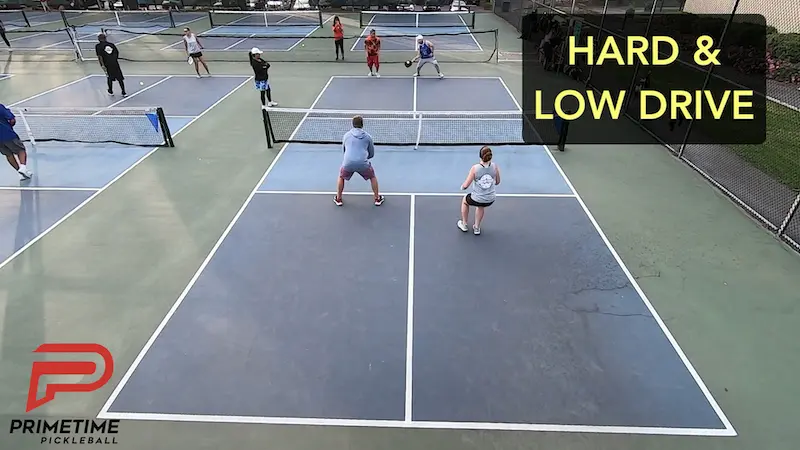
They may miss it into the net or send it out because it’s just got too much heat on it or they’ll block it back and you will have the chance to either hit a drop on that next one if it was a good block or if it was a sitting block then someone on your team can come in and just finish at that point.
Both scenario happen where you get a finisher on the next one or you have to just you drop the following one and then finish your advance.
So, that one does come up potentially the most frequently and you’re going to want to be on the lookout for those driving opportunities.
Final Thoughts
Now all of this is very important to keep in mind but this does not excuse you from needing a very solid third shot drop.
That is still going to be predominantly the shot you’re going to be using in most of your matches because the strategy behind it is still very sound.
It does allow you to advance to the net behind it as long as you hit a good one and from there you have a better chance of winning the point.
So again, none of this excuses you from really developing your strong drops so that you can transition from that baseline position to the net position. That is still going to be a key skill in your arsenal.
Definitely work that but also keep these other scenarios in mind because dropping is not always what is called for in every single situation.
That used to be the prevailing wisdom but that is no longer true. You’re going to have to adapt and evolve as the game evolves so that you can stay competitive.
Being aware of and applying the right strategy for the scenario at hand is going to help you play your game at your best and come out with the best possible outcome.
Happy Pickling!

